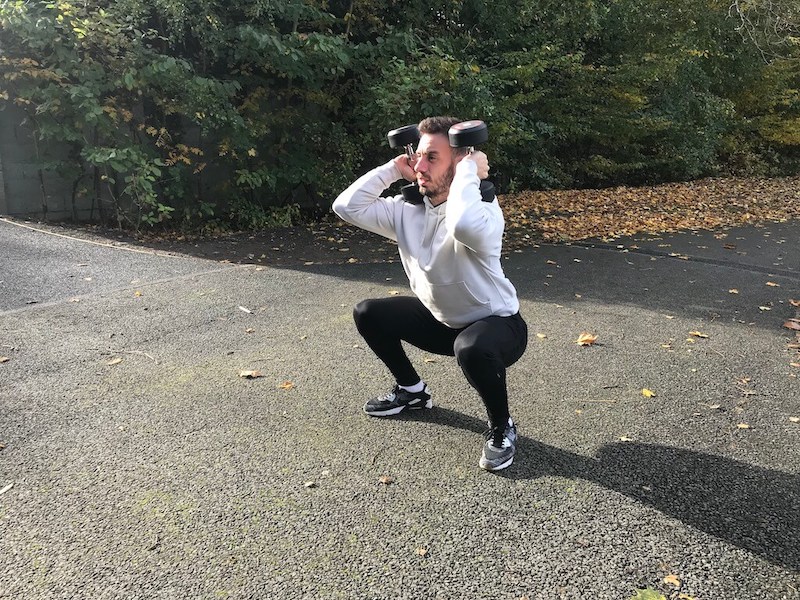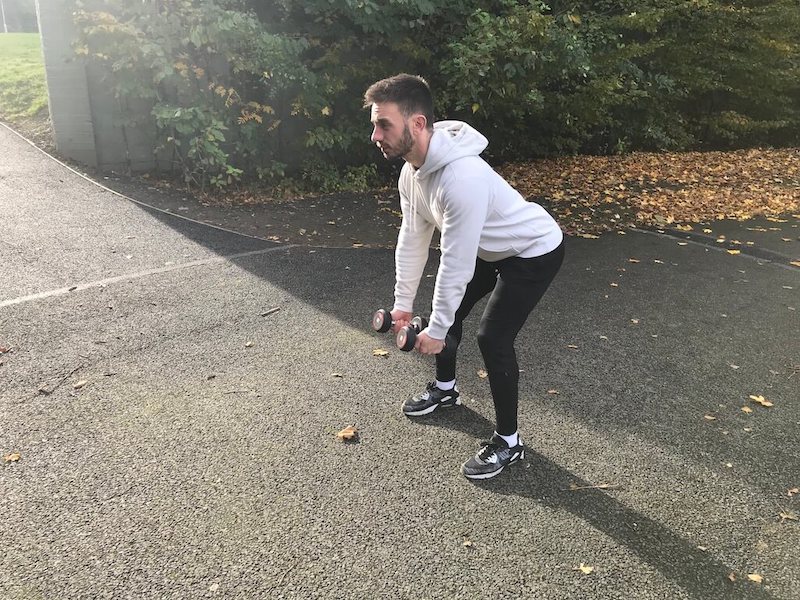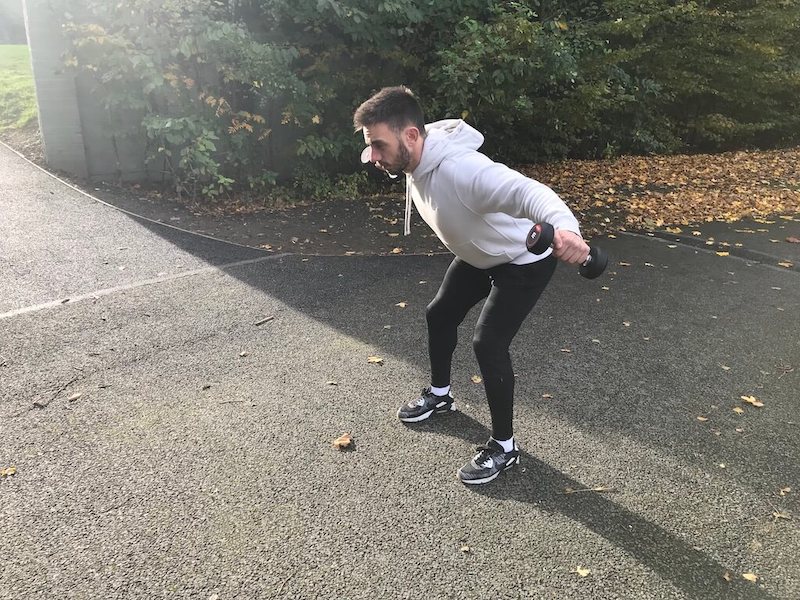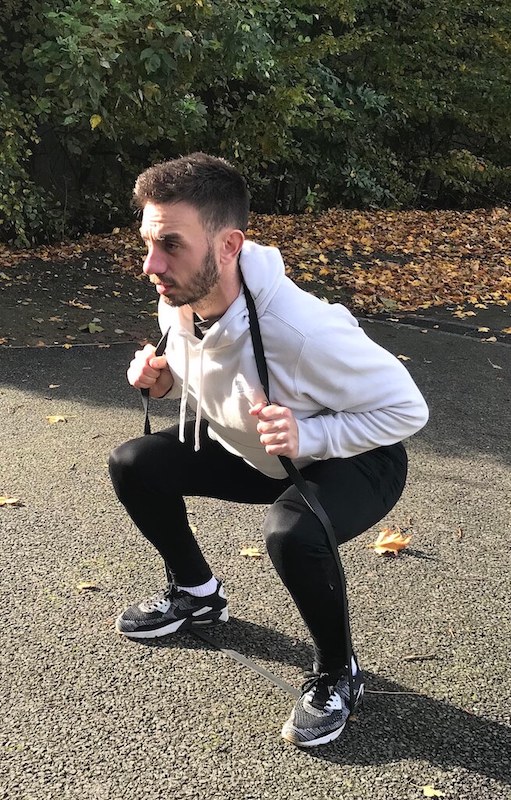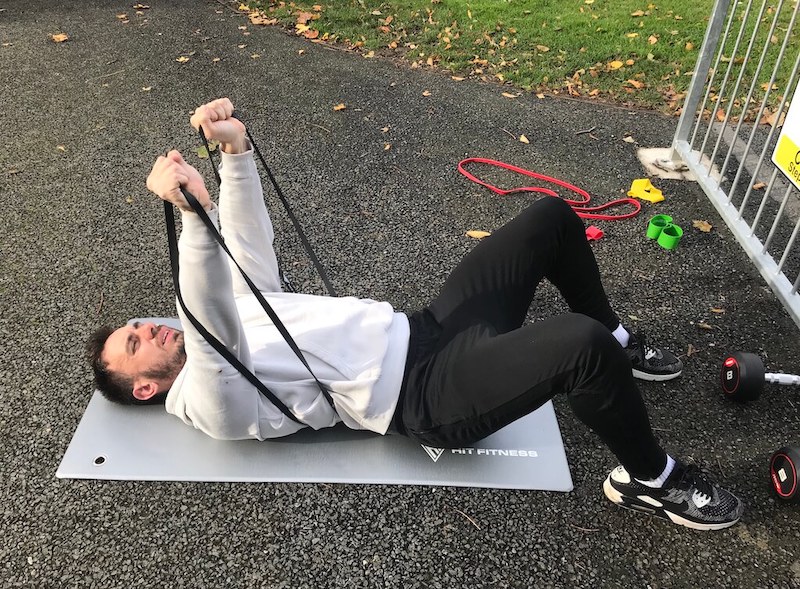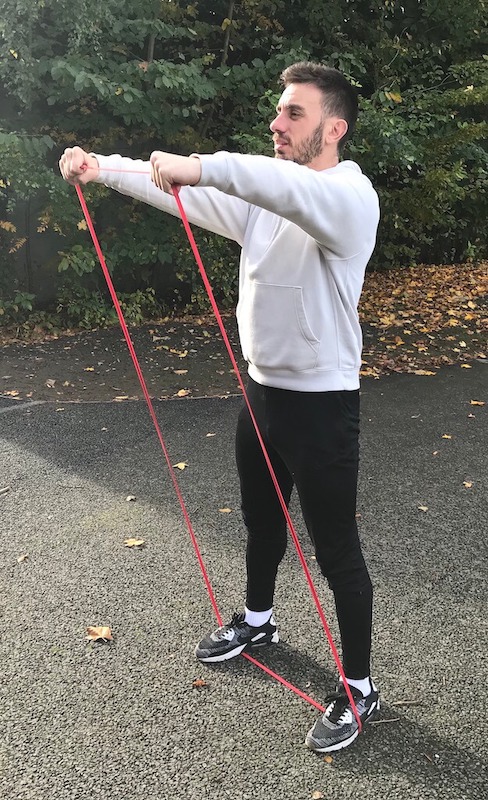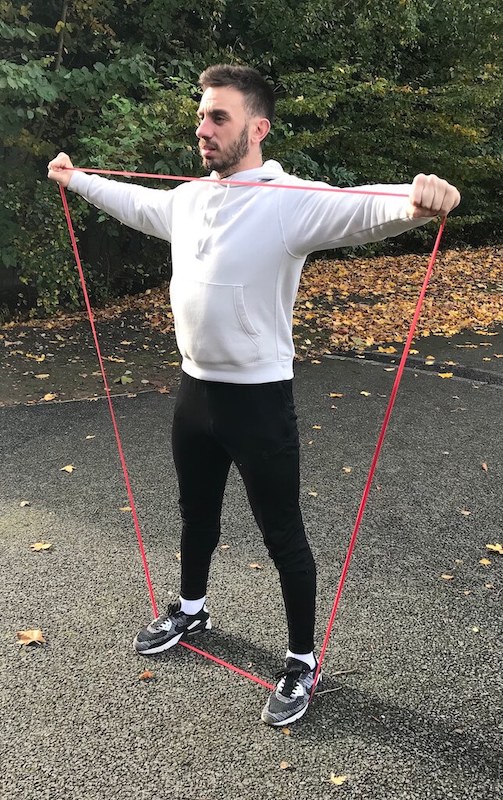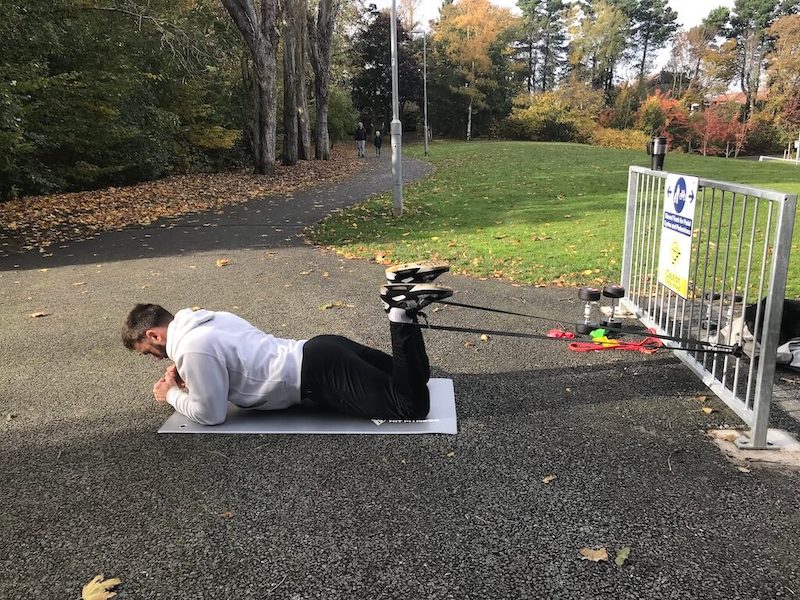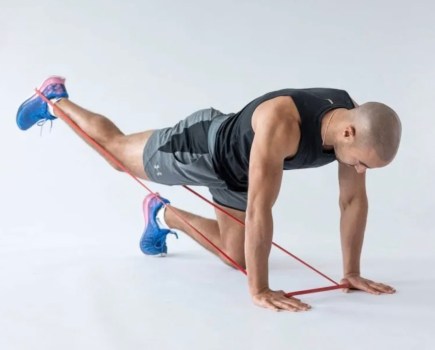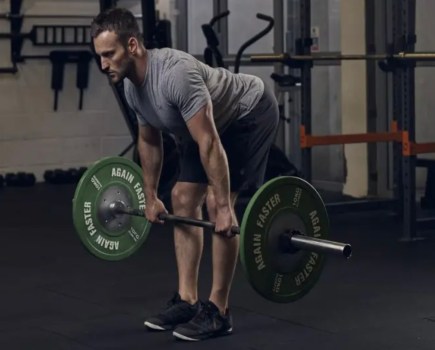Ben Walker from Anywhere Fitness demonstrates a number of light-weight exercises you can use to replicate your usual gym-based routine wherever you are.
HOW TO:
- Perform 15-20 reps of each exercise.
- Take 60 secs rest between sets.
- Complete 3 sets of each exercise.
1. Upright DB Squat
Benefits: By placing the dumbbells end over end on your shoulders, you’re forced to activate your postural muscles and hips. It also requires your lats and pecs to assist as stabiliser muscles.
How to:
- Place each dumbbell vertically on your shoulders. Keep them in this position and hold them with a neutral grip.
- Stand with feet shoulder-width apart. Keep both feet aligned with your knees.
- As you begin to squat, bend your knees and push back with your hips.
- Keep your core braced and push out with your chest. This will help to keep your postural muscles activated while carrying the weight.
- Lower until your hips are parallel to the floor.
- Drive through your heels to return to standing.
2. Reverse DB Flye
Benefits: This is a great exercise for training the muscles of your back and shoulders together, which is crucial for good posture – helping to strengthen your frame while preventing your shoulders from hunching forward.
How to:
- Stand with feet hip-width apart and hold both dumbbells with a neutral grip.
- Hinge at the hips, push them back and lower your torso towards the floor. Your chest should be almost parallel with the ground in the starting position.
- Extend your arms directly toward the floor and bend your elbows slightly – your palms should be facing each other.
- Arc the weights to the side, then up as you squeeze your shoulders blades together, maintaining a bend in your elbows.
- Slowly perform the same movement in reverse to return to the start.
3. Resistance Band Squat
Benefits: Improve squat technique with this banded variation. Throughout the eccentric and concentric phase of the exercise, the load distributed throughout the band forces the prime movers of your quads and glutes to work harder, while keeping the stabiliser muscles (hamstrings, scapular muscles, posterior shoulders) activated at all times. The tension of the band also helps stabilise the hips while contracting all the muscles in the concentric phase.
How to:
- Stand with feet shoulder-width apart on a large resistance band. Make sure your feet are centred on the band.
-
Bring the other end of the band over your head and rest it on the grooves of your upper traps.
-
Hold both sides of the band in front of you.
- To initiate the squat, hinge at your hips and bend at the knees. Keep your chest slightly pushed out as you lower to the floor.
- Stop when your hips and thighs are parallel to the floor, then drive through your heels to return to standing.
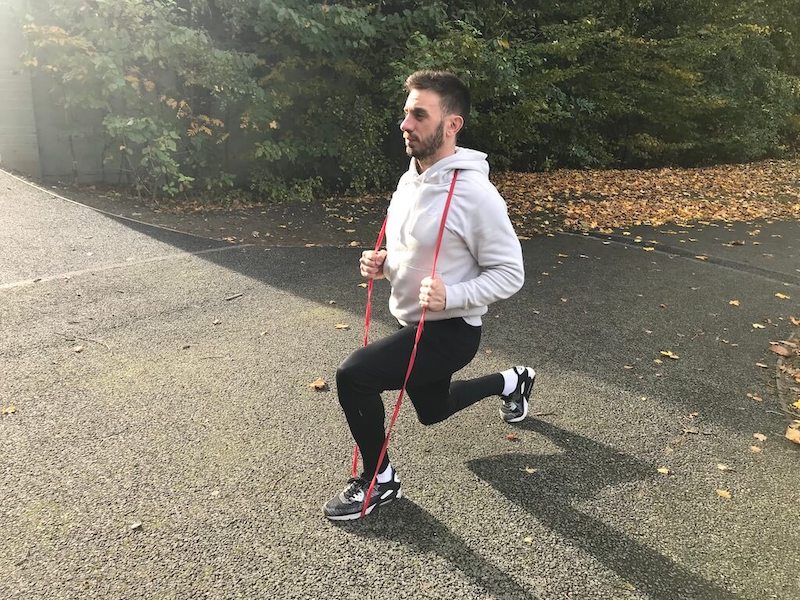
4. Resistance Band Static Lunge
Benefits: This is another effective exercise for working multiple muscle groups. Like squats, performing it with a resistance band will increase your range of motion, enhance power in the prime movers, and keep tension in the stabiliser muscles during the eccentric phase. As with any unilateral exercise, it will also improve balance and coordination, and will keep your form in check when you up the weight.
How to:
- Starting on the right leg, step forward with your right foot and stand on the centre of the resistance band.
- Take a big step back with your left leg.
- Bring the other end of the resistance band over your head and rest it on the grooves of your traps.
- Hold the band directly in front of you with both arms positioned at right angles.
- As you lunge to the floor, make sure that your feet are aligned with your knees – your knees should not go beyond your toes.
- Before your back leg touches the floor, drive your weight through your heels to return to the start, and repeat.
5. Resistance Band Chest Press
Benefits: Without access to a bench or chest press machine, it’s tough to break down the muscle fibres in your chest enough for hypertrophic gains. But by resting your back on a heavy resistance band, you can create enough tension in this supine position with minimal equipment.
How to:
- Lie flat on your back on an exercise mat. Make sure the band is spread evenly across the mat before resting on it.
- Taking both sides of the band, hold it with a pronated grip – your palms should be facing down.
- In the starting position, your hands should be a little wider than shoulder-width. Your arms should be positioned at right angles.
- Extend your arms directly above your chest until extended.
- Feel the squeeze in your pecs, then slowly repeat the movement in reverse to come back to the start.
6. Anterior Raise with Band Pull-apart
Benefits: The anterior raise acts as the first phase of the workout, targeting all the muscles in the anterior chain. Transitioning to the band pull-apart, the opposite muscle groups act as primary movers.
How to:
- Stand hip-width apart on a resistance band.
- Hold the band with a pronated grip at your thighs. Look straight ahead and keep your arms extended.
- Performing the anterior raise first, lift both arms up to shoulder level without bending your elbows. Your palms should be facing the floor.
- Transition to performing the band pull-apart. Pull the band out to each side until briskly touching your chest.
- Perform the exercise in reverse to come back to the start.
7. Resistance Band Hamstring Curl
Benefits: This move isolates the three muscles in the hamstrings, while the calves and glutes are activated as secondary muscle groups.
How to:
- Place an exercise mat on the floor next to a sturdy pole or railing.
- Leave about two foot between the mat and the railing.
- Tie one end of the band around your ankles and the other to the railing.
- Lie face down on the mat in a pronated position. There should be slight tension in the band while your legs are extended.
- As you begin the exercise, curl your legs back towards your backside, keeping your thighs locked to the mat.
- Slowly extend your legs to return to the start.
Anywhere Fitness is an at-home personal training service based in Dublin. Visit anywherefitness.ie


